New Freedom for Cataract Patients
The human lens is made mostly of protein and water. It can become clouded, keeping light and images from reaching the retina. In more than 90% of cases, this is caused by the aging process. A cataract is not a “film” over the eye, and neither diet nor lasers will make it go away. The best way to treat a cataract is to remove the old, clouded lens and provide a replacement. The time to have your cataracts removed is when the quality of your vision begins to put limits on your activities and enjoyment of life.
Cataract surgery is performed on an outpatient basis and usually requires just a few hours of your time from start to finish. After treating your eye with an anesthetic, the surgeon will make a tiny incision in the eye and will use a tiny instrument to gently break up or wash away the cloudy cataract. Once the cataract is removed, the surgeon can insert a replacement lens. Medina Vision and Laser Centre work closely with surgeons to offer patients choices when it comes to cataract surgery.
Standard Cataract Surgery
With Standard Cataract Surgery, the cloudy crystalline lens is removed and replaced with a standard intraocular lens. This procedure will relieve the symptoms of cataracts, such as a glare and blurry vision. However, the standard lens will not necessarily make the patient independent of prescription glasses. Most private insurances and medicare plans will cover this procedure.
Custom Cataract Surgery
The Custom Cataract approach gives the patient the opportunity to obtain better quality vision than Standard Cataract Surgery. This approach can minimize the need for prescription eyeglasses for distance vision. In most cases, reading glasses will still be necessary after surgery. This particular type of surgery requires an extensive pre-surgery examination that helps the surgeon to determine how to address specific conditions such as astigmatism.
Corneal Astigmatism can be addressed with special surgical techniques, or with the use of a special intraocular lens known as a toric lens.
Lifestyle Cataract Surgery
Lifestyle Cataract Surgery provides the greatest range of vision. This approach involves using a specialized “multifocal” or “accommodative” intraocular lens. Some of the current Lifestyle Lenses include ReSTOR, Tecnis IOL, and the Crystalens. The doctors at Medina Vision Centre, as well as your surgeon, will be able to choose the right type of lens for you depending on your needs.
Patients who choose Lifestyle Cataract Surgery will significantly reduce their need for glasses for near and distance vision, and can do functional close work without reading glasses. Many still prefer reading glasses for extensive close-up work or for looking at very fine detail.
Because a Lifestyle Cataract Surgery requires a more advanced lens as well as more sophisticated pre-operative testing, there are out-of-pocket expenses associated with this approach that are not covered by insurance of medicare.
Glaucoma Management
Glaucoma, coined “the sneak thief of sight”, must be tested for routinely as a part of every comprehensive eye health and vision examination. The doctors at Medina Vision Centre utilize Goldmann applanation tonometry (versus “air puff”) to screen for high intra-ocular pressure (IOP). High IOP over time damages the optic nerve and eventually diminishes visual function. It does not hurt or make the eyes red, and it does not affect vision until optic nerve damage has already set in. Once diagnosed, therapeutic eye drop therapy is initiated. State of the art tracking instrumentation is incorporated to medically manage glaucoma and track treatment efficacy.
These include;
- Pachymetry: Corneal thickness testing is helpful in the diagnosis of glaucoma. If the eye has moderate or greater thickness, it has greater protection against higher IOP.
- GDX and/or OCT: These instruments are utilized to monitor the nerve fiber layer and efficiency of the optic nerve layers in collection of visual information.
- Threshold Visual Field Testing: This interactive test is completed regularly to demonstrate any changes to the peripheral (side) vision of the patient with glaucoma.
- Gonioscopy: A Goldmann 4 Mirror tool is used to visualize the drainage angle in the front, inside portion of the eye to determine if fluids are able to flow out efficiently.
Both Dr. Beiling and Dr. Earley have been managing glaucoma at Medina Vision Centre for many years and utilize all of the above mentioned instrumentation in –house. It is our goal to monitor this ocular disease to prevent or minimize the long term visual effects that high pressure can have on the optic nerve over time.
